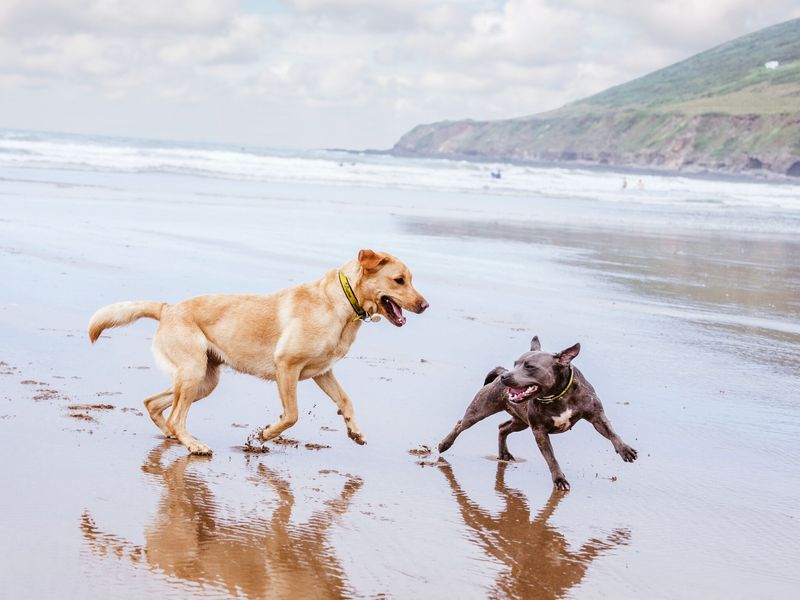
Keeping your dog safe at the beach
Beaches are a wonderful place to enjoy with your dog. Before heading out, check out our beach safety tips.

We all need a quick beach get-away once in a while – and our pets are no different. Whether hanging up your work boots or taking a break from sofa-snoozing with a chew (you decide who’s doing what), a holiday is time well spent with your furry friend.
But if you’re taking your dog on the beach or near water, there are some important things to consider. We’ve teamed up with the RNLI to bring you all the safety tips you need to keep your pup safe and happy while you doggy paddle into your next holiday.
- Planning your trip
- Be alert to weather conditions
- Keep your dog safe on the sand
- Good handling practice and emergencies
Planning your trip
Dog beach safety starts before any paws have even touched sand. When planning a beach trip with your dog, make sure to check the weather beforehand.
Avoid taking your dog out in high temperatures. Our four-legged friends can’t regulate their body temperature in hot weather the same way we can. Exercising your best pal in temperatures as low as 21-degrees Celsius can cause heatstroke which can be fatal, so take extra care.
It’s also important to check that the beach you’re visiting allows dogs. There are plenty of dog-friendly beaches around the UK. But some beaches have a dog-free policy at certain times of the year, or dog-free areas. So, it’s a good idea to check before you go.
While you’re there
Happy that your destination will make a suitable playground for your pooch? Follow our tips below to enjoy your beach trip safely and keep them wagging on the waterside:
Be alert to weather conditions
- Check the sand isn’t too hot before taking your best friend on it. Make sure you can stand comfortably barefoot before you let their paws do the same.
- Provide shade and fresh drinking water for your dog all day so they don’t overheat or become dehydrated.
- Avoid sunburn keep your dog out of direct sunlight where possible. Use pet-safe sun cream on exposed skin, like the tips of their ears and nose. Ask your vet for more advice if needed.
- Dogs should never be left alone in cars. You may already be aware of this one, but even a few minutes could prove fatal. On a 22-degree Celsius day, the temperature inside a car can rise by eleven degrees in just ten minutes. If you see a distressed dog in a car, call 999.
Keep your dog safe on the sand
- Dogs shouldn’t drink sea water (no matter how tasty) as it can cause sickness and saltwater poisoning. Make sure your pooch isn’t eating anything else they shouldn’t like seaweed or plastic. Call your local vet if they do.
- Bring some treats so you can swap unsuitable items your dog picks up for a safe snack.
- After a beach day with your mucky mutt, rinse any sand and seawater off their coat and paws with tap water to stop it building up and causing irritation.
Good handling practice and emergencies
Keep your dog on a lead if you are close to cliff edges or fast-flowing water. This also applies to the beach if your dog hasn’t mastered recall. Tip: long leads will let them explore the beach safely.
If heading for a coastal walk, check tide times to ensure you and your pup don’t get stranded. Tide times and heights can change quickly throughout the month, so be alert.
If your dog goes into the water, over a cliff edge or gets stuck in mud, don’t go after them. Move to a place your dog can reach safely and call them. If you’re worried, call 999 or 112 and ask for the Coastguard. The RNLI treats pets the same as it does humans and will always help if they can.
So, before you leap into your frolicking furball’s good books with a spontaneous seaside getaway, paw a line in the sand by considering our top tips. This will ensure your relaxing day at the beach is one to look back on. Surf’s pup!



